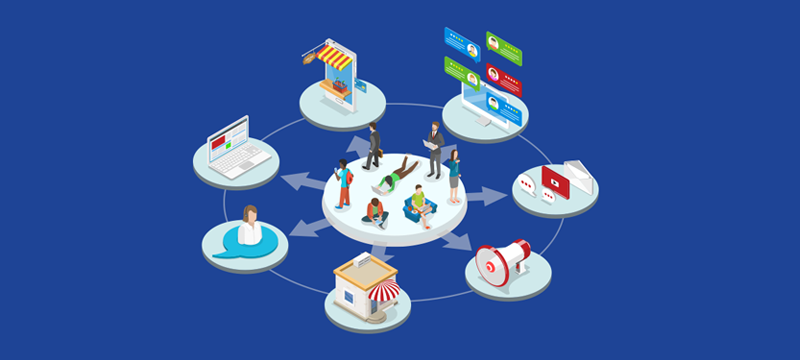With the technological innovations available today, customers expect that the online and bricks and mortar elements of a business will work seamlessly together. Though it can be a challenge to put these things in place, the flexibility and choice that omnichannel shopping provides is highly attractive to customers. Failing to offer it can mean your customers shop elsewhere. Luckily, with Magento, you’ll be able to meet the demands of the modern consumer and put those omnichannel experiences in place.
What is omnichannel retail?
Essentially, omnichannel retail enables customers to buy your products through any channel (e.g., website, social media page, in-store), on any device and with a range of delivery options (e.g., buy/collect in-store, delivered to the door). It is through the creation of this overarching omnichannel that you provide a seamless, user-friendly shopping experience that improves sales and keeps customers loyal to your brand.
Why choose Magento for Omnichannel retail?
- Wide range of extensions to improve customer experience
Providing an omnichannel shopping experience means building your store around the needs of your customers and this often requires more functionality than is found in the basic Magento or Magento 2 platform. Luckily, there is a wide range of very useful extensions available, such as cart customisations that you can use to add omnichannel features like pick up from store, etc. - Mobile-friendly site design
With the huge increase in the number of people buying on their phones, any company at wants to offer omnichannel shopping needs to have a site that is fully responsive. This means going beyond simply making the site render on any sized screen, it also demands that page layouts and navigational features are user-friendly and make buying easier.
One of the benefits of Magento is that the responsive design is created specifically for eCommerce, with developers focussing on removing barriers that cause people to abandon mobile sites. In addition, there are a number of extensions which enhance the mobile experience, helping shoppers to make easy payments and providing them with features like touch security and the ability to redeem loyalty rewards when making a purchase. - Extensive third-party integration
One way to reach a much wider audience for your products (and extend the number of channels you offer them) is to sell your items on eBay and Amazon. If you run a Magento store, there is no need to set up a separate system to achieve this, as there are extensions that enable you to sell your items on these sites, and you can manage all this directly from the Magento backend.
Indeed, Magento provides support for multiple seller accounts and numerous marketplaces and even lets you sell using different currencies.
Other third-party integrations enable real-time inventory tracking, which is essential when you are offering in-store collection or next-day delivery, as well as integrations with PayPal, MailChimp and Google Analytics, etc. - Adding social media to the omnichannel mix
Social media is an important element of the omnichannel infrastructure. Aside from providing a channel which enables users to communicate and interact with your brand, social media sites are making it increasingly easier for businesses to sell products directly from them. For many customers, they are the preferred channel for finding out about your products, contacting customer service and ordering the products themselves.
Magento is a great platform to use when adding social media to your omnichannel experience as there is a range of extensions that can link your website with your social media accounts. - Tools to unify the shopping experience
Magento has a range of tools and features to help retailers with both online and physical stores to unify their services. Magento supports delivery to store, dispatch from store, online purchase and click and collect from third parties. This is made possible through its clever inventory system that provides store owners with accurate details of stock levels across the different channels.
Conclusion
Providing customers with an omnichannel shopping experience is a key objective for retailers, especially those with both physical and online stores. It enables customers to move between different channels and devices seamlessly and receive their purchases in the manner which best suits their needs. Putting this in place requires a website that integrates with other channels, that can access and provide detailed inventory information, that performs well on a range of devices and which has the tools to bring all these disparate services together. The best platform for achieving this is Magento. If you are looking for hosting for your Magento eCommerce store, take a look at our dedicated Magento hosting solutions.

